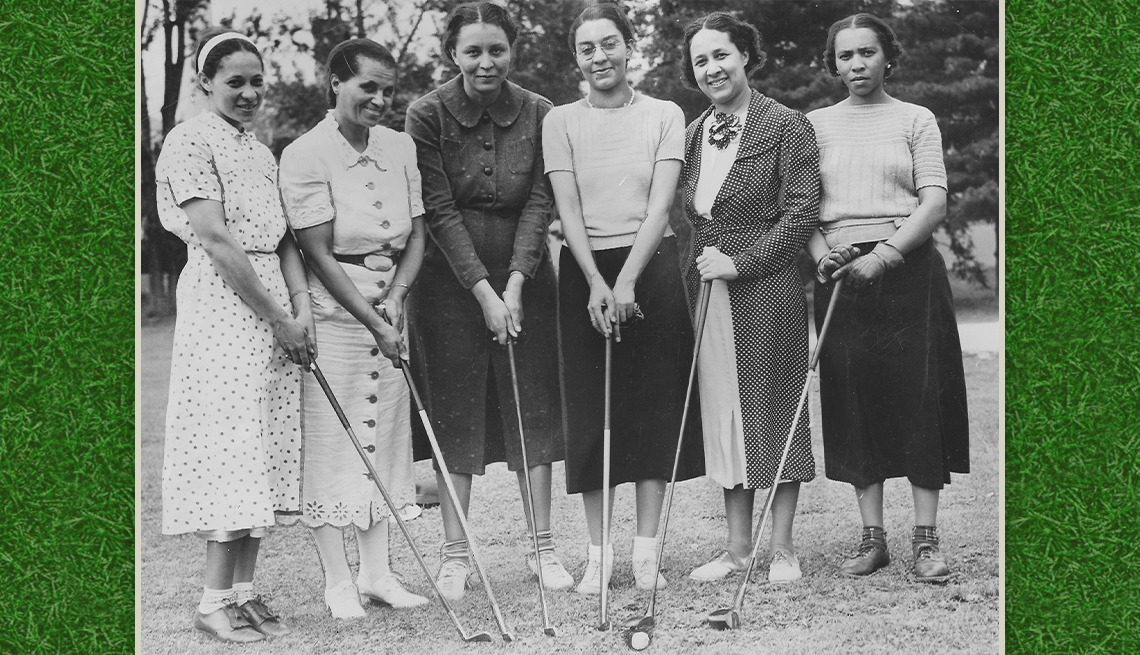
History behind wake-robin, first black women's golf club
- Select a language for the TTS:
- UK English Female
- UK English Male
- US English Female
- US English Male
- Australian Female
- Australian Male
- Language selected: (auto detect) - EN
Play all audios:

So when the Wake-Robin club was formed, the goal was “to perpetuate golf among Negro women, to make potential players into champions and to make a permanent place for Negro women in the
world of golf,” according to a 2007 article on municipal golf and civil rights published in _The Journal of African American History_. Honey Wade points Velina Sutton to her golf ball
down the fairway. Courtesy of Wake-Robin Golf Club The name Wake-Robin comes from a deep-purple flower native to the Mid-Atlantic, the epicenter of the Black upper class at the time. In
1938, Wake-Robin members sent a petition to then-Secretary of the Interior Harold Ickes, urging him to desegregate public golf courses. That activism inspired Black women around the country,
and soon Black female golf clubs were established in Chicago, Baltimore, Atlantic City, Philadelphia and New York City. In 1939, Ickes approved the first golf course constructed solely for
African Americans. Built on the site of an abandoned landfill near the Anacostia River in Washington, D.C., Langston Golf Course was named after John Mercer Langston, Howard University’s
first law school dean and the first Black Virginian elected to Congress. The course remains open today and is listed on the National Register of Historic Places. Langston became the primary
meeting place for the Wake-Robin group. The club continues its practice of evaluating every potential member’s golf game before she can join. Wake-Robin member Paulette Savoy, 76, a real
estate broker from Waldorf, Maryland, has been a golfer since she was in her 30s. That was around the time a friend, who was a member of the club, assessed her potential. “She would say,
‘You’re almost good enough. You’ve just got to improve a little more,’ ” Savoy says. “Now we let in beginners and work with them and encourage them to improve their games.” Richetta Johnson,
74, a retired Howard University administrator who has been a member since 1989, recalls the day she first encountered the Wake-Robins. Playing at a local course, a couple of members noticed
Johnson, pulled her aside and asked, “Do you play golf?” “I could tell they were players, that they were really good,” Johnson says. Despite being a novice, Johnson got an invite anyway.
Members helped her improve her game.
